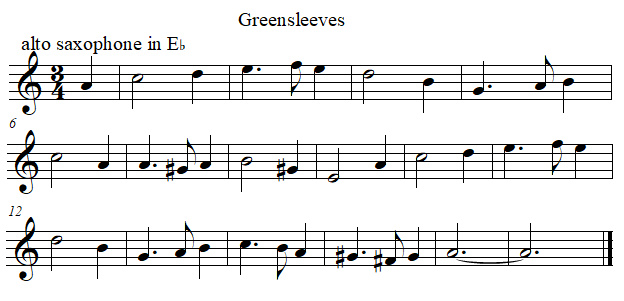Learn how to transpose a melody or a score from B♭ to E♭. This transposition can be useful for alto saxophone in E♭, sopranino saxophone in in E♭, clarinet in E♭.
How to transpose from B♭ to E♭
Melody to transpose from B♭ to E♭
Below is a melody we want to transpose from B♭ to E♭:

Transposing this melody for alto saxophone in E♭
The method is the same described in Transposition:
- From where to where?: I am an alto saxophone in E♭ and I want to play a B♭ score, and I know that a written C4 for alto saxophone in E♭ is sounding E♭3 and that a written C4 for B♭ clarinet is sounding B♭3 (read Transposing instruments).
- What interval?: I must play all an ascending perfect fifth upper.
- Initial key?: Here the key is F Major
- New key?: Adding an ascending perfect fifth to F Major produce C Major
- Key Signature Identification?: The new key signature for C Major is neutral (no key signature)
- Which clef to use (sight-reading)?: Here you must read the music score with a baritone clef
Result:

You should be careful with accidentals:
- Bar 7,8 and 15: C♯ become G♯
- Bar 15: B♮ become F♯


